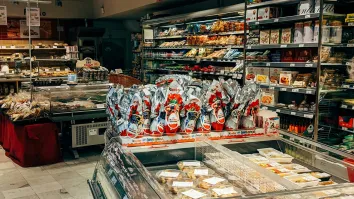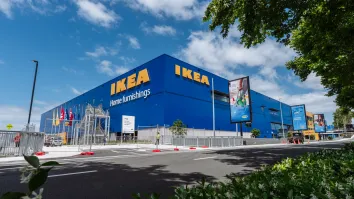Shopping goes mobile for Asia's tech-savvy consumers
The role of the smartphone has continuously evolved to become an agent of change, transforming the retail scene profoundly. Muneerah Bee takes a closer look at how the mobile phone is changing the way we shop.
We are living in a multiscreen world where e-commerce and mobile commerce (m-commerce) are experiencing a robust growth, especially in Asia where the population are increasingly more dependent on their smartphones.
In fact, m-commerce growth is outpacing e-commerce globally and to stay ahead of the curve, retailers are investing in technologies that would enable tech-savvy consumers to make purchases via their mobile devices. Small businesses are also realising the importance to innovate and digitalise in order to remain relevant to the changing business environment.
Market forces pushing m-commerce
Consumers play a part in this shift to mobile shopping. In recent years, South-east Asia boasts strong growth in smartphone ownership and usage, thanks to the improvement in connectivity and data speeds. There are millions of digital consumers across the region, and decreasing costs of mobile devices, as well as improved and cheaper mobile infrastructure, have also significantly boosted mobile usage in Asia.
The Digital Acceleration in Southeast Asia – Navigating Tectonic Shifts report by management consulting firm Bain & Company shows that 62% of smartphones shipped in South-east Asia are priced at less than US$150 and 89% of Internet users use the smartphone as a primary device. Moreover, Southeast Asia now has 200 million digital consumers, up 50% from last year.
It can be noted that the region’s developing countries with large rural populations often have weak and inefficient retail stores outside of their urban cities, making it difficult for many villagers to get the products they want.
However, many Asian markets today are becoming mobile-first economies, which means m-commerce is enabling consumers to easily get products which would have been difficult to find offline. It empowers them to explore the Internet, allowing them to surf and shop for purchases with ease anytime and anywhere.
Adrian Lee, research director at research and advisory firm Gartner, notes: “Mobile shopping experience is immediate, contextual and by far more impulse-driven than the traditional online (desktop) experience.”
However, he adds: “Regional and local B2C digital commerce providers struggle to get the same conversion rates on mobile apps compared with desktop, even when they see increasing levels of mobile transactions.”
Device-driven experience
As the Mobile Moments Transform Commerce and Service Experiences report by Forrester points out, mobile creates an opportunity to transform customers’ perception of a company or brand. This is especially relevant as Asian consumers are getting more familiar with making mobile purchases amid the increased synthesis between offline and online activities.
Zhou Junjie, Shopee’s country head, Singapore, says: “Mobile shopping provides consumers with even more convenience as compared to online shopping and this carries enormous value and potential for businesses. More retailers are optimising their user interfaces and enhancing their m-commerce offering. This way, they can capitalise on the popularity of
m-commerce by attracting consumers with convenience and a seamless user
experience.”
Given its nature of easy access, m-commerce also encourages spontaneous spending with shoppers drawn to the attractive price points and the variety of items available. For example, to cater to consumers’ ever evolving purchasing habits, Shopee started ‘Flash Deals’ — limited deals that
only last between six and twelve hours.
To improve the Shopee app, the e-tailer’s data science team gathers insights from data which is then used to help make better-informed decisions to cater to consumers’ needs. For example, the recently launched Shopee Mall, a dedicated in-app space for B2C sellers, was based on curated data on brands and products that are doing well on the online shopping platform.
Social media also plays a central role in South-east Asia’s digital spending, according to Bain & Company. Better connectivity and advertising technology across m-commerce apps and other heavily used apps, such as Facebook, allow users to easily discover and access products from their social media accounts.
“Native ads, such as those on Instagram, are able to sophisticatedly target users with products they want, and seamlessly link to the product’s m-commerce page, making in-app advertising a driving force in m-commerce adoption in Asia,” says Itamar Benedy, CRO and managing director of mobile ad tech company. Glispa Global Group.
However, smaller screens make placing ads on mobile devices more difficult, which means in order to attract users to m-commerce apps, ads need to become more innovative, such as using native ads which blend into the app’s
content, he adds.
Sabrina Tan, founder and CEO of Skin Inc, shares that the major difference of m-commerce is everything on mobile needs to be more optimised and concise than on online. “Customers expect to be able to do their shopping one-handed while riding the train, so it is critical that things are very intuitive. Whereas you can survive on online taking shortcuts, mobile is much less forgiving.”
Providing customised skincare solutions, Skin Inc is poised to grow in m-commerce to attain long-term sales. It recently revamped its website with mobile-first approach as it believes improving overall mobile experience for the customers is the pre-requisite for capitalising on m-commerce purchases. “Cross-channel research and purchase are becoming the new norm where mobile devices aid consumers in their purchase journey and serve as a platform for direct purchase,” Tan explains.
Additionally, Skin Inc’s latest developments are in line with the transformation plans for the retail industry in Singapore launched by the government in September last year.
Different strokes
Should companies then differentiate their e-commerce and m-commerce strategies?
Lee opines the focus in Asia should be mobile-centric and advises companies and retailers to “purpose-build the most relevant customer experience for consumers through constant refinement of their mobile app”.
Mobile retailers Retail Asia spoke to say e-commerce and m-commerce both go hand-in-hand and by creating a truly seamless mobile and cross-device experience, users will be more engaged in all stages along their path to purchase.
Tan believes businesses should strive to have a consistent and familiar brand experience no matter the channel, while Zhou notes: “There is no fixed formula in optimising e- or m-commerce strategies, as every market has its own unique set of challenges and needs.”
As m-commerce is gradually taking the lead in the industry, Benedy believes it is more critical now than ever for companies to take into account strategies to diversify their e-commerce business by incorporating the m-commerce business environment. He adds that instead of
differentiating their e-commerce and m-commerce strategies, retailers should relook into how they can integrate and enhance the seamless integration of e-commerce and m-commerce services, ensuring that both platforms can provide high-quality customer engagement and user experiences.
“M-commerce should not be treated as a standalone business unit, separate from e-commerce and other divisions of the company. This is especially important as we are seeing the industry making big strides in being able to connect data cross-platform between mobile and Web,” says Benedy.
Retailers also need to ensure that they are able to fulfil demands by ensuring their website interface is mobile-optimised with the ability to offer smooth and secure transactions. Improving the user interface and addressing users’ pain points when shopping on mobile proves the retailer puts the customer first on every step of the way along the digital purchase path.
It also helps to hone the payment systems to ensure that it is safer, more secure and convenient and provide a user-friendly platform for buyers and sellers to communicate.
In its report titled The Five Fixes to Increase Mobile Checkout Conversion, research firm Forrester suggests retailers should rationalise the checkout task flow, eliminate anything that hampers mobile site performance and only integrate digital wallets that consumers actually use. For example, Shopee localises payment solutions options across the region to meet the unique demands of each market. In Singapore, credit card usage and bank transfers are the primary modes of payment while in Taiwan, customers can collect and pay their packages at 7-Eleven stores.
Where is it headed?
The Internet economy in ASEAN alone is worth US$50 billion today, according to Bain & Company, and the future of m-commerce in Asia shows much promise with high potential for progress as the number of smartphone users continues to increase.
Forrester forecasts mobile online retail would grow at a rate of 15.6% through 2021, across the Asia- Pacific region. While some markets in Asia, such as Singapore, China and Thailand, are most receptive to m-commerce, there are nascent markets such as the Philippines, which has a large population and a high volume of smartphone users, yet the adoption rate of m-commerce is low, Shopee’s Zhou observes.
“South-east Asia presents irresistible growth opportunities and challenges for new and incumbent B2C digital commerce entrants. Peripheral opportunities to win are also present for retailers that specialise in vertical categories such as fashion, digital content, consumer
electronics and cosmetics,” Gartner’s Lee predicts, adding that existing digital commerce providers should strengthen their businesses by
continuing their focus on delivering the best customer experience and converting the mobile app audiences to increase their gross merchandise volume.
Moreover, m-commerce in Asia will be increasingly defined by big players, whether they are entering the market for the first time or snapping up smaller local players to expand their reach and benefit from local knowledge, Benedy maintains.
The Asia-Pacific M-Commerce 2017 report by international market research company Research & Markets sums it up well when it says that while Asia- Pacific has the highest rate of mobile shopper penetration worldwide, there is still room for growth especially as online purchasing via messaging apps becomes more popular.
The 'M' word
IN any city across Asia, you are likely to see young people glued to their smartphones, symbolising millennials as early adopters of m- commerce in the region. Not only do they drive and contribute to its rapid growth by purchasing more frequently, they are also purchasing higher value items through mobile. In fact, Asia’s m-commerce space is set to be particularly shaped by millennials in the near future, as 60% of the world’s millennials will live in Asia by 2020, according to consultancy firm Accenture.
Zhou Junjie, country head, Singapore, Shopee, says: “A large number of active users of shopping apps are millennials who typically associate online shopping with lower prices, convenience and better value. “The rise in online shopping, coupled with the burgeoning smartphone market, has resulted in the development and adoption of mobile apps. Today, when shopping on their phones, millennials demand nothing less than a seamless user experience, speed and payment security.”
Zhou continues: “As such, to win them over, m-commerce players need to alleviate security fears by facilitating swift, secure and easy payments and also ensure that they have mobile-optimised websites.”
Itamar Benedy, CRO and managing director, Glispa Global Group, agrees that the millennial generation wants immediate results as they rely heavily on mobile devices for information and, increasingly, for making purchases: “Mobilefirst millennials play a big role in m-commerce, using their mobiles not only to make purchases but also to research, make price comparisons and discover new products through social media ads and other forms of mobile advertising.”



















 Advertise
Advertise






